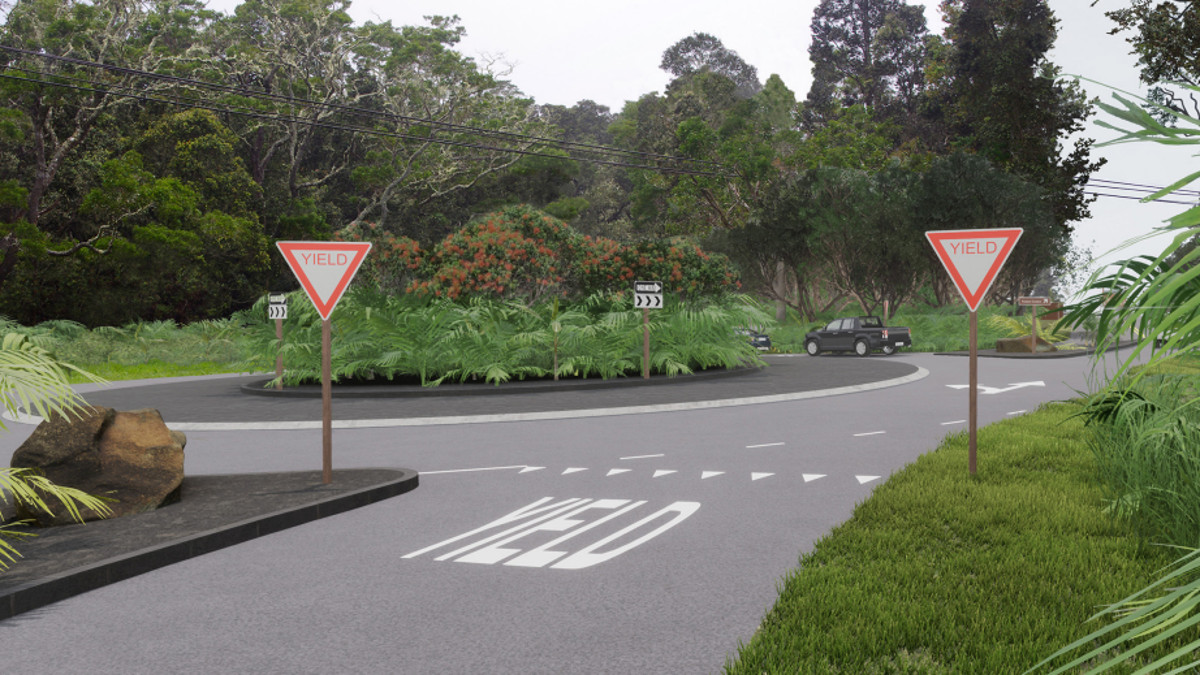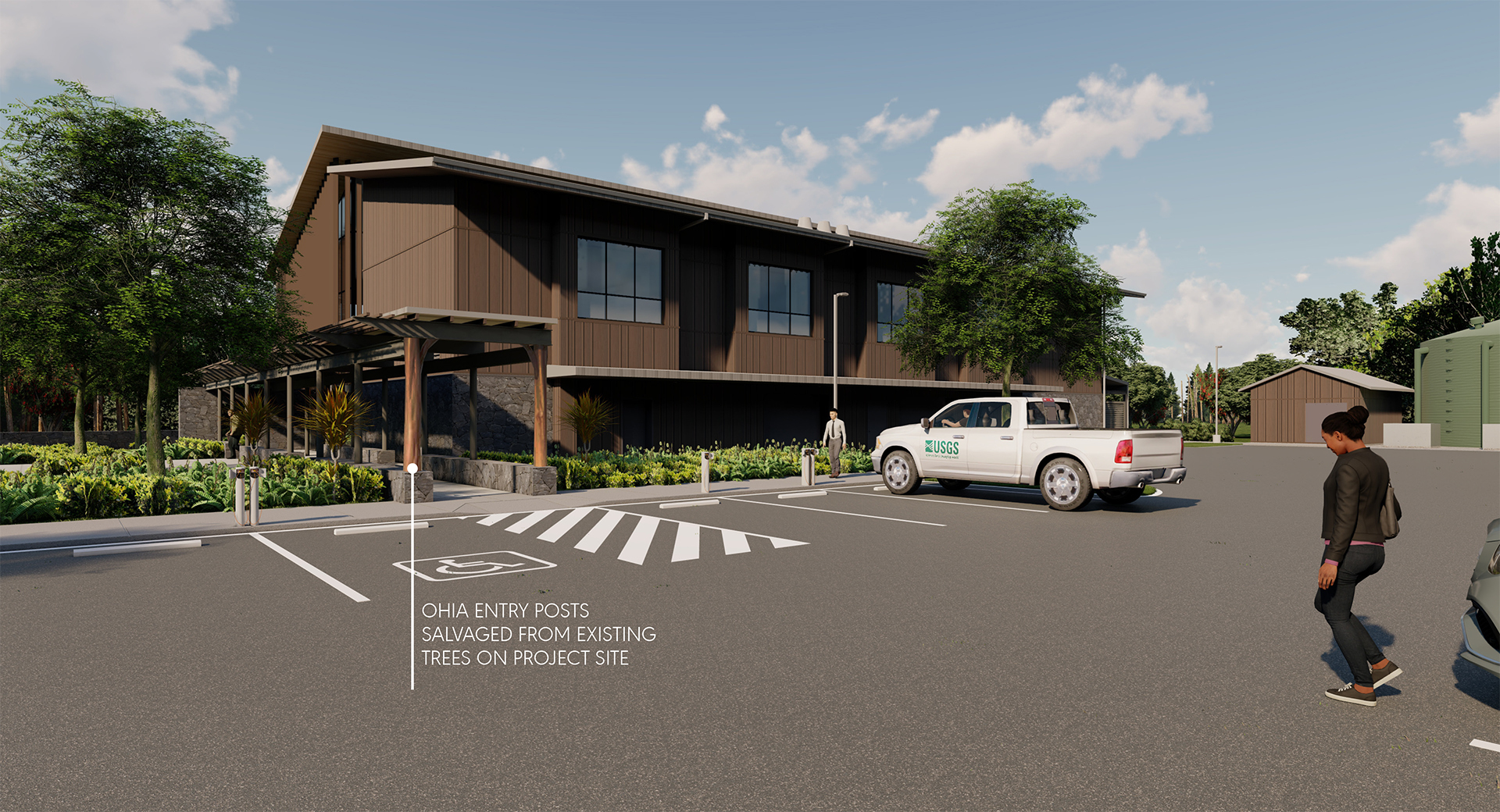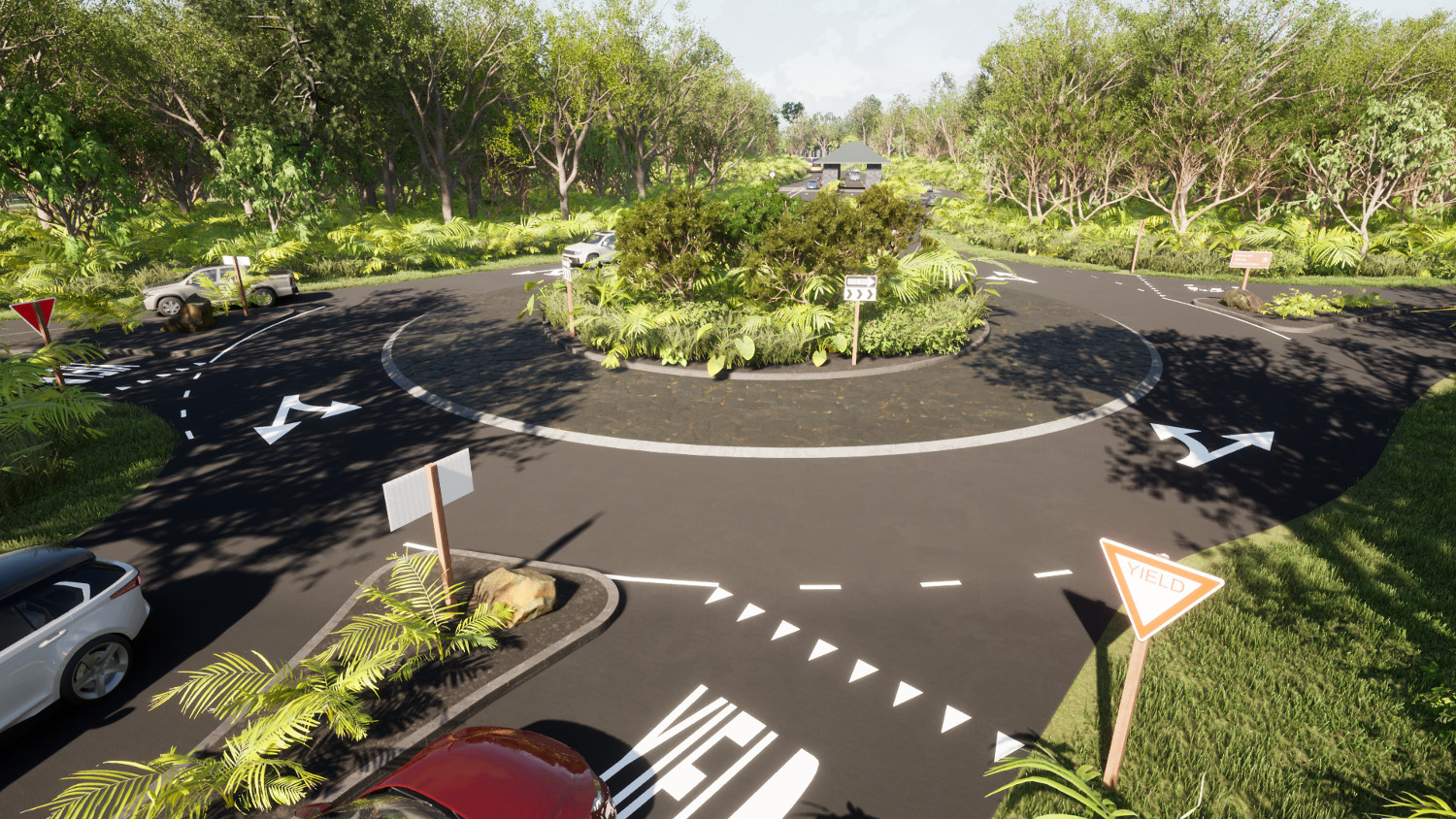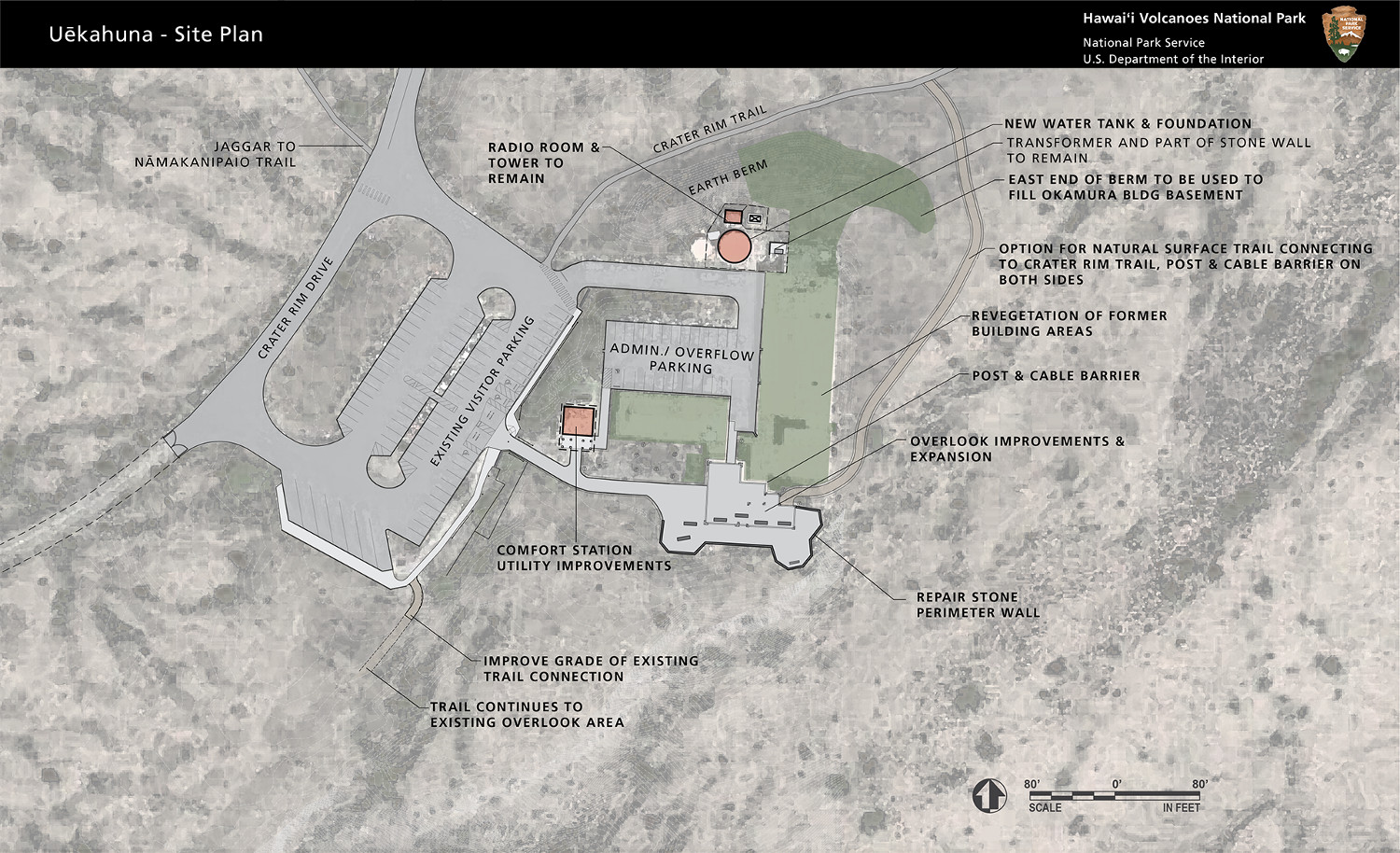(FILE VIDEO from February 2022) Video, photos courtesy USGS Hawaiian Volcano Observatory and National Park Service. A synthesized voice was utilized in the narration for this story.
(BIVN) – The public comment period is now open on the environmental assessment for the Hawai‘i Volcanoes National Park’s Disaster Recovery Project.
The comment period opened on Friday, July 1, and will close on July 31. A virtual public meetings is scheduled to be held on July 21.
From the National Park Service:
Hawaiʻi Volcanoes National Park and the U.S. Geological Survey (USGS) seek community input on the environmental assessment (EA) for the proposed action to move the Disaster Recovery Project forward following the 2018 volcanic eruption and summit collapse on Kīlauea volcano. The comment period opens July 1 and closes on July 31, 2022, and a virtual public meeting will be held July 21 at noon and again at 6 p.m.
The focus of the Disaster Recovery Project is to repair, replace, relocate or remove critical park infrastructure and USGS-operated facilities and equipment damaged during the 2018 eruption and summit collapse.
Under the proposed action, the National Park Service (NPS) would:
- Deconstruct the damaged facilities (Jaggar Museum and two adjacent USGS buildings) at Uēkahuna bluff area.
- Repair the comfort station at the Uēkahuna bluff area.
- Repair and restore access to the Uēkahuna bluff overlook.
- Construct a natural surface trail to connect overlooks on Crater Rim Trail in the Uēkahuna bluff area.
- Remove and replace the existing water tanks in the Uēkahuna bluff area.
- Replace the USGS HVO research facilities and construct a new field station near the ball field by Kilauea Military Camp (KMC).
- Construct a new replacement visitor center next to the existing Kīlauea Visitor Center/park headquarters building.
- Repurpose the existing Kīlauea Visitor Center (KVC) facility as a space for indoor park programs, special events and K-12 educational programming. KVC will continue as the park headquarters site.
- Enhance the park entrance and realign Crater Rim Drive to improve visitor safety with a roundabout, and the addition of a third lane for administrative use only to reduce wait times at the park entrance for visitors and staff.
- Deconstruct non-historic National Park Service office space in the park research area and relocation of the NPS offices to former USGS Pacific Island Ecosystems Research Center buildings.
- Develop parking, utilities and other site infrastructure to serve the facilities of the proposed action and improve traffic flow.
The public is invited to review and submit input on the EA before July 31, 2022 at 11:59 p.m. MDT (7:59 p.m. HST) in the following ways:
- Online. The preferred method to receive comments is through the NPS Planning, Environment, and Public Comment (PEPC) website. The PEPC website hosts the EA and detailed project information.
- Phone. Callers can leave a detailed message or request someone calls them back by calling a dedicated phone line, (808) 460-6212.
- Attend a virtual meeting on July 21, 2022 at noon or 6 p.m. The same information will be presented at both meetings so it is necessary to only attend one meeting. The Disaster Recovery Project presentation will be at the top of the hour. Join the online Zoom meeting. If you do not have internet access, you can join by phone: (888) 475-4499 toll-free in the U.S. Meeting ID: 930 0740 8720. The meetings will provide an opportunity for the public to learn more about the environmental assessment for the project, have discussions with NPS and USGS staff and provide input. Comments received will be reviewed, analyzed and considered for the environmental assessment. The meetings will be recorded and a link to the recording will be posted on the project website.
The National Park Service added:
The 2018 eruption and caldera collapse were the most destructive eruptive events in Hawai‘i in the last two centuries, and the park closed to the public for 134 days.
Starting in May 2018, Kīlauea summit and the park underwent major changes as magma drained from the chamber beneath Halema‘uma‘u crater, and the caldera began to collapse, triggering thousands of felt earthquakes and clouds of rock and ash that continued until early August. The seismic activity was primarily centered near the crater, and significantly impacted buildings in the immediate vicinity on Uēkahuna bluff, including Jaggar Museum and the USGS-operated Okamura facility and equipment, resulting in the closure of the area.
The results of post-disaster assessments found that significant investment would be necessary to make Jaggar Museum and the USGS Hawaiian Volcano Observatory-operated Okamura building and Geochemistry Annex safe to occupy and operational. The buildings are surrounded by fault lines and the area continues to subside on the crater side, undermining slope stability at the existing terraces and building foundations.





by Big Island Video News10:59 pm
on at
STORY SUMMARY
HAWAIʻI VOLCANOES NATIONAL PARK - The project follows the 2018 volcanic eruption and summit collapse on Kīlauea volcano, which closed the park to the public for 134 days.